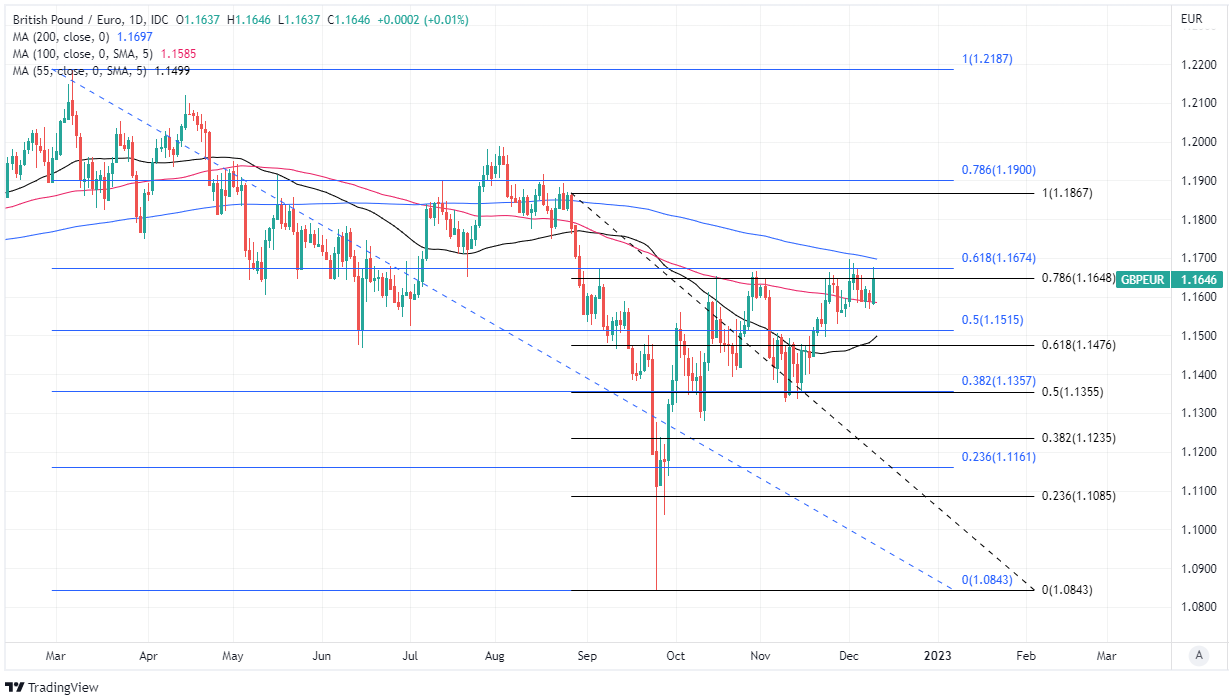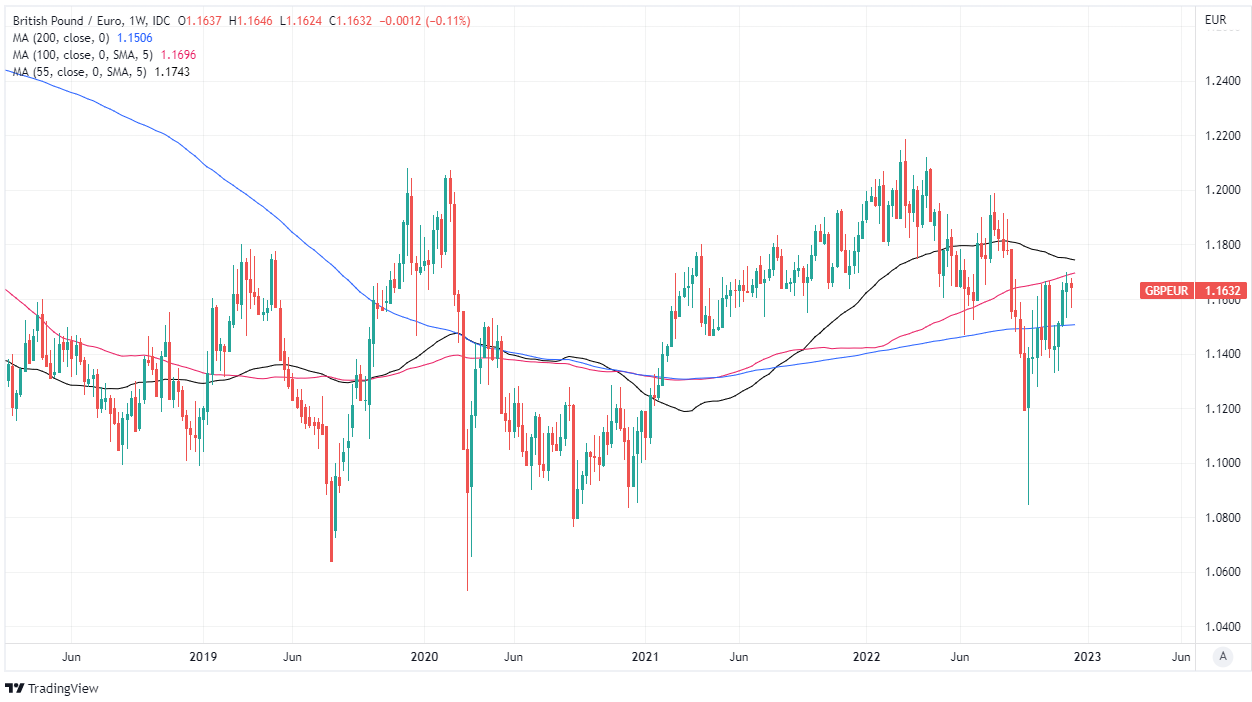GBP/EUR Week Ahead Forecast: MPC Votes No Confidence in BoE Forecasts
- Written by: James Skinner
-
- GBP/EUR rebound stalled near resistance on charts
- Technical support possible around 1.1585 & 1.1498
- BoE decision poses risk with ECB a potential offset
- UK GDP, employment & inflation data also in focus

© Bank of England
The Pound to Euro exchange rate recovery has stalled in recent weeks and the risk of a partial reversal is now high due to an ongoing disagreement between the Bank of England (BoE) and financial markets about what will or will not be necessary to return inflation to its 2% target.
Monetary Policy Committee (MPC) members remain in a bind because of the large gap between market-implied expectations for interest rates in the UK and the BoE's own views on the outlook for inflation next year and beyond, a gap that continues to pose risk for the Pound to Euro rate.
"With fiscal policy tightening sharply next year, most MPC members will be content to revert to a 50bp hike. Nonetheless, the minutes of December's meeting should be newsworthy for markets," writes Samuel Tombs, chief UK economist at Pantheon Macroeconomics, in a Monday research briefing.
"We think the minutes could contain overt guidance again to markets that Bank Rate will not need to rise all the way to 4.5%," he adds.
The trouble for Sterling is that financial markets expect Bank Rate to rise from 3% to around 4.5% by May next year when the BoE has indicated with its own analysis and forecasts that this would inflict significant and unnecessary damage on the economy in subsequent years.
Above: GBP/EUR at daily intervals with Fibonacci retracements of March and August declines indicating possible areas of technical resistance for Sterling. Selected moving-averages denote possible support and resistance.
The market's interest rate prescription is viewed in this way because BoE analysis and forecasts suggest the combined effect of 2022's increase in energy prices and a total of eight increases in Bank Rate thus far are already enough to drive inflation back to the 2% target and then far below it over the coming years.
BoE forecasts projected in November that inflation would fall to zero by the end of 2025 if Bank Rate is raised to the 4.7% peak that markets were pricing-in at the time, and similar has been true in relation to all of the eight earlier increases in Bank Rate announced since last December.
Each set of forecasts has suggested that by delivering on frequently increasing market expectations, the BoE would eventually undershoot its inflation target by incrementally larger amounts each time, and yet each time the BoE has continued to raise interest rates nonetheless.
"The inflation target of 2 percent is symmetric and applies at all times. This reflects the primacy of price stability and the forward-looking inflation target in the UK monetary policy framework," the BoE's latest mandate says.
All of this matters because it's the "over the coming years" level of inflation that HM Treasury tasks the BoE with guiding toward the "forward-looking inflation target" of 2%, which explains the BoE's repeated attempts to steer market rate expectations lower with its public statements.
Above: GBP/EUR at daily intervals with Fibonacci retracements of September recovery indicating possible areas of technical support for Sterling. Selected moving-averages denote possible support and resistance. Click image for closer inspection. If you are looking to protect or boost your international payment budget you could consider securing today's rate for use in the future, or set an order for your ideal rate when it is achieved, more information can be found here.
The above is also why further increases in Bank Rate this Thursday or in the months after would amount to something like a vote of no confidence by the BoE in its own ability to predict inflation, or otherwise a choice to depart from the mandate awarded by HM Treasury.
"We continue to see Bank Rate pushing as high as 4.5% by May-23 (Feb-23: 50bps, Mar-23: 25bps, May: 25bps). Why the need for 100bps more tightening in 2023? Persistently higher inflation on the way down, and upside risks to wage pressures," says Sanjay Raja, a senior economist at Deutsche Bank.
"Risks to our call remain tilted to the downside, however. Given the dovish messaging from the MPC since November, risks are skewed to Bank Rate peaking closer to 4% than 5%, in spite of our inflation (and labour market) concerns," Raja adds in a Friday research briefing.
If the BoE remains true to its recent form this week then the risk would be of a Thursday policy decision to raise Bank Rate to 3.5% and some accompanying commentary that casts fresh doubt over the merits of market expectations, all of which would do little to help Sterling.
However, the Pound to Euro rate is also likely to be responsive this week to the latest European Central Bank (ECB) interest rate decision due out soon after the BoE's announcement, and just like with Sterling the ECB's interest rate decisions have done little good for the Euro during recent months.
There is as a result a risk that Thursday's ECB decision will have an offsetting impact that limits any fresh or further losses for GBP/EUR this week.
Above: Pound to Euro rate shown at weekly intervals with selected moving-averages. To optimise the timing of international payments you could consider setting a free FX rate alert here.













